Aoling festival: A festival of welcoming spring in Nagaland
Nestled amidst the verdant hills of Nagaland, India, a vibrant celebration unfolds every spring. The Aoling festival, a kaleidoscope of colors, music, and tradition, marks the arrival of spring for the Konyak tribe, the largest among Nagaland's seventeen. Held in the first week of April, coinciding with the Konak New Year, Aoling is a week-long extravaganza that celebrates life, renewal, and the promise of bountiful harvests.
Also Read: 10 least explored places in Northeast India that you must visit
For travelers seeking an authentic cultural immersion, Aoling offers an unparalleled glimpse into the rich heritage of the Konyak people. This blog post will be your guide to experiencing the magic of Aoling, from understanding its significance to navigating the festivities.
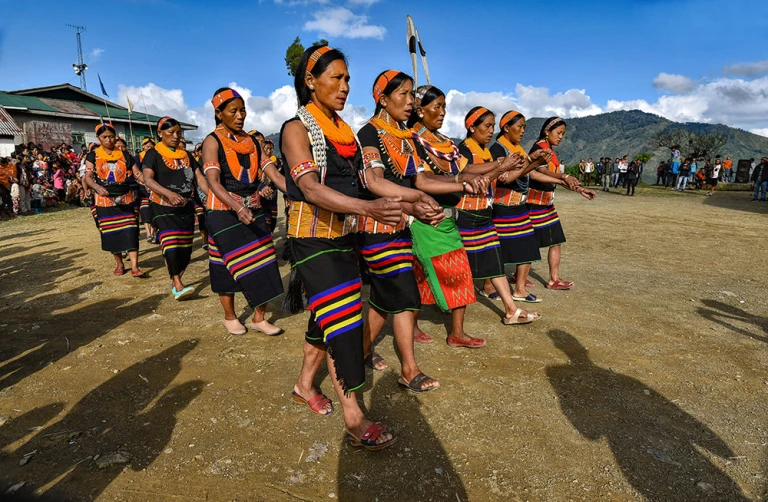
A Celebration Steeped in Tradition
The Aoling festival, also known as Aoleang Monyu, translates to "festival of blessing the fields." Its roots lie deep in the agrarian way of life of the Konyaks. As the harsh winter months recede, and spring paints the hills with a verdant hue, Aoling becomes a time for thanksgiving for the past year's yield and a fervent prayer for a prosperous season ahead.
The week-long celebration is meticulously planned, each day imbued with specific rituals and customs. Traditionally, the festival begins with the sowing of seeds in freshly prepared fields, a symbolic gesture of hope and renewal. Animal sacrifices, though less prevalent today, were once offered to appease the deities and ensure a bountiful harvest.
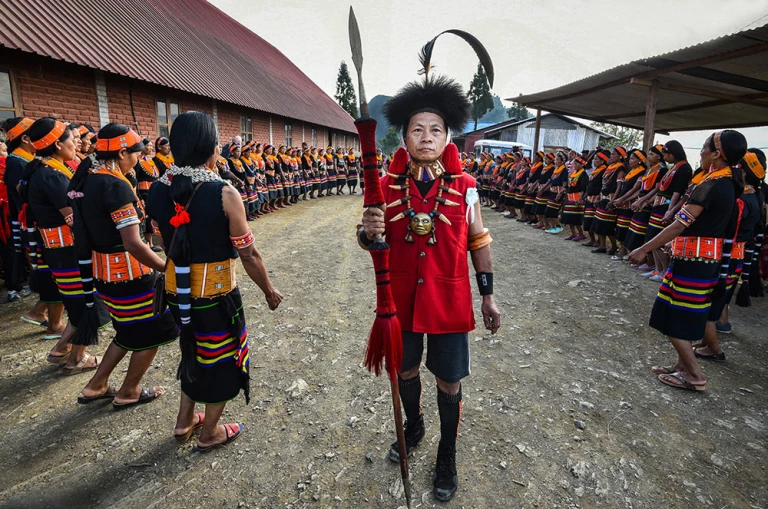
A Week of Revelry
Aoling unfolds with a vibrant tapestry of events. Here's a glimpse into what awaits you during the six days of festivities:
Day 1 (Aoleang Pang): The festival commences with a cleansing ritual. Villagers gather around a bonfire, chanting prayers and seeking blessings for a prosperous year.
Day 2 (Monyu Ao): This day is dedicated to the community. Villagers come together for communal feasts, sharing stories, and strengthening social bonds. Traditional games like stilt walking and tug-of-war add a playful touch to the day.
Day 3 (Longhao Ao): Witness the artistic prowess of the Konyak tribe on this day. Folk songs and dances depicting stories of their ancestors, hunting exploits, and daily life fill the air. The Heirok, a vibrant dance performed by men adorned with feathers and headgear, is a visual spectacle.
Day 4 (Chenhao Ao): This day is dedicated to the warriors of the tribe. Traditionally, warriors showcased their skills in mock battles and displayed their bravery. Today, the spirit of competition continues with archery and wrestling competitions.
Day 5 (Aohao Ao): Witness the artistic expression of the Konyak women on this day. They showcase their intricate beadwork, textiles, and traditional attire. Bargaining for souvenirs at the makeshift markets is a delightful experience.
Day 6 (Tshangheh Ao): As the festival draws to a close, a sense of joyous closure fills the air. A grand community feast is held, followed by farewell songs and dances.
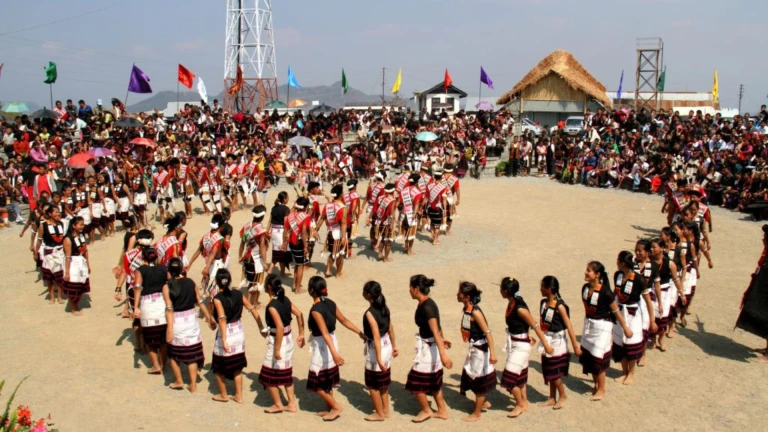
Beyond the Festivities: Exploring Konyak Culture
While the Aoling festival is the highlight, your Nagaland exploration shouldn't end there. Take time to delve deeper into the Konyak way of life:
Visit the Longwa Village: This village, nestled amidst rolling hills, is famous for its headhunting traditions. Today, the practice is a relic of the past, replaced by a thriving tattoo culture. Explore the headhunter's morung, a traditional community house adorned with intricate wood carvings and human skulls (replicas used for educational purposes).
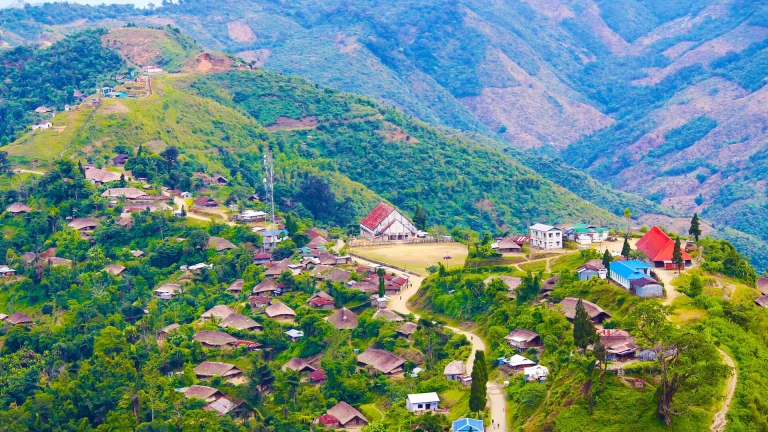
Witness the Tattooing Process: Tattoos hold immense cultural significance for the Konyak tribe. Skilled tattoo artists, using traditional tools and techniques, create intricate designs on the bodies of men and women.
Immerse Yourself in Nature: Nagaland boasts breathtaking landscapes. Hike through lush forests, explore hidden waterfalls, or simply relax amidst the serene beauty of the hills.
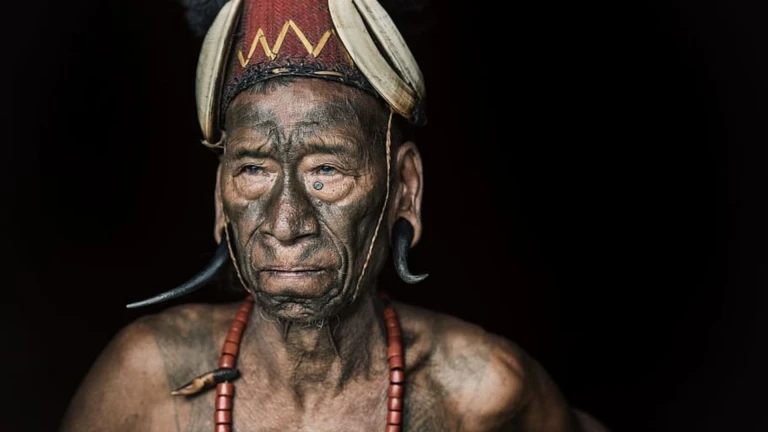
Tips for Attending the Aoling Festival
Accommodation: Hotels in Mon district, particularly in Mon town, fill up quickly during Aoling. Book your stay well in advance. Homestays are also an option, offering a more immersive experience.
Respect the Culture: Dress modestly and be mindful of local customs. Seek permission before taking photographs, especially of ceremonies and religious rituals.
Embrace the Spirit: Aoling is a time for celebration and community. Participate in the festivities with an open mind and a spirit of respect.
A Journey Beyond Tourism
Aoling offers a unique opportunity to connect with a community steeped in tradition and a deep connection to nature. Here's how your experience can transcend mere tourism:
Become a Responsible Traveler: Support local businesses by purchasing souvenirs directly from artisans and opting for homestays. Minimize your environmental impact by using reusable water bottles and disposing of waste responsibly.
Engage with the Locals: Learn a few basic Konyak phrases to break the ice and interact with the villagers. Their warm hospitality and genuine smiles will leave a lasting impression.
Participate in Workshops: Several workshops are held during Aoling, teaching visitors about traditional Konyak crafts like weaving, beadwork, and even tattooing (using non-permanent methods).
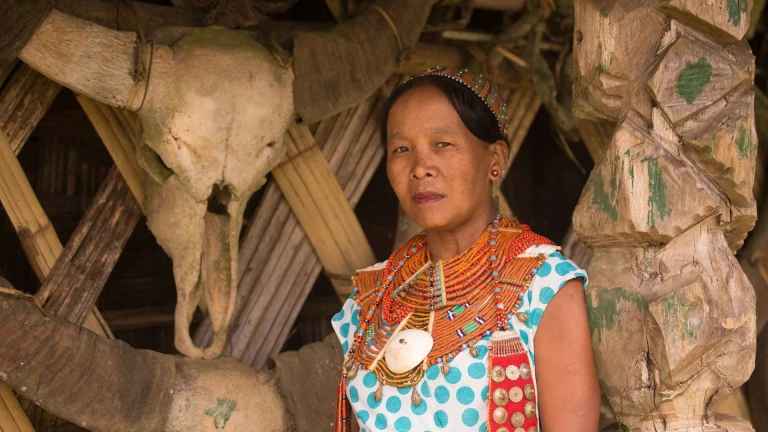
A Glimpse into a Changing World
While Aoling celebrates tradition, it also reflects the evolving nature of Konyak society. Modern music and dance performances often find their place alongside age-old rituals. Witnessing this harmonious blend offers a fascinating glimpse into a culture adapting to the modern world while holding onto its roots.
Also Read: Nagaland Travel Guide: What to See, Do, and Experience
Additional Tips:
Learn about the Konyak Tribe: Before your trip, delve into the history and culture of the Konyak tribe. This will enhance your understanding of the festival's significance.
Hire a Local Guide: A knowledgeable local guide can navigate the festivities, translate conversations, and provide insightful commentary on the traditions you witness.
Be Prepared for the Weather: Nagaland experiences pleasant spring weather during Aoling. However, pack light rain gear as sudden showers are a possibility.
With careful planning and an open mind, the Aoling festival promises to be an enriching and unforgettable experience. So, immerse yourself in the vibrant tapestry of Konyak culture and create memories that will last a lifetime.
Published at
About Author
Manya Shastry
Subscribe our Newsletter
Get our weekly tips and travel news!
Related Posts
10 Best Countries to Celebrate New Year 2025
Explore the best countries to celebrate New Year 2025, from Sydney's dazzling fireworks to Rio's beach parties and Tokyo's traditional celebrations.
10 Best Places in India to Celebrate Ganesh Chaturthi 2024
Explore the 10 best places in India to celebrate Ganesh Chaturthi!
10 Most Popular Festivals in North India
Explore the vibrant tapestry of North India's festivals, from the dazzling lights of Diwali to the joyous hues of Holi, showcasing a rich cultural heritage that unites communities in celebration and harmony.
10 Unique Festivals of India that we bet you didn't know about
Journey through India's lesser-known festivals, from the vibrant Hornbill Festival in Nagaland to the tranquil Pongal celebrations in Tamil Nadu.
10 Ways to Make Valentine’s Day Extra Special in Mumbai
Celebrate Valentine’s Day in Mumbai with these 10 romantic experiences, from rooftop dinners to beach picnics, yacht rides, and more for a perfect date.
Latest Posts
You don't Need FASTag anymore? Everything you need to know!
No more FASTag from May 1st?
10 Dreamy Experiences for Couples in Kashmir
Fancy some romantic experiences in Kashmir?
How much will a trip to Indonesia cost from India? Travel Budget Guide
Need to budget a tropical getaway from India to Indonesia?
Indian Traveler's 7 Day Itinerary for Island Hopping in Indonesia
Your perfect Indonesian island getaway guide is here!
Best 4-Day Itinerary for Kashmir, India
Ready to fall in love with Kashmir in just four days?

